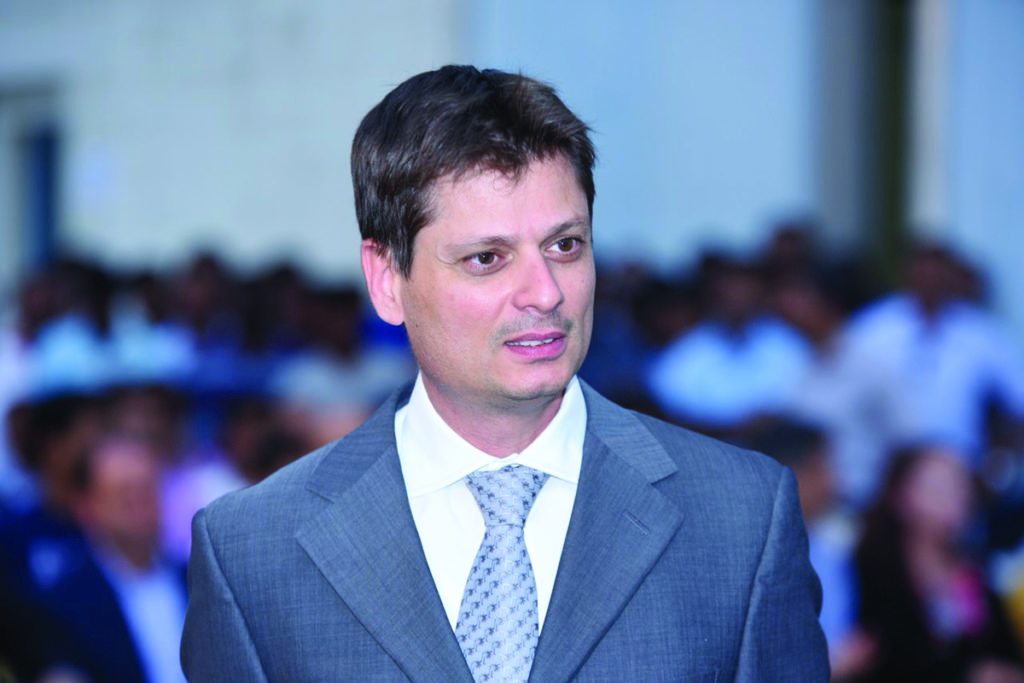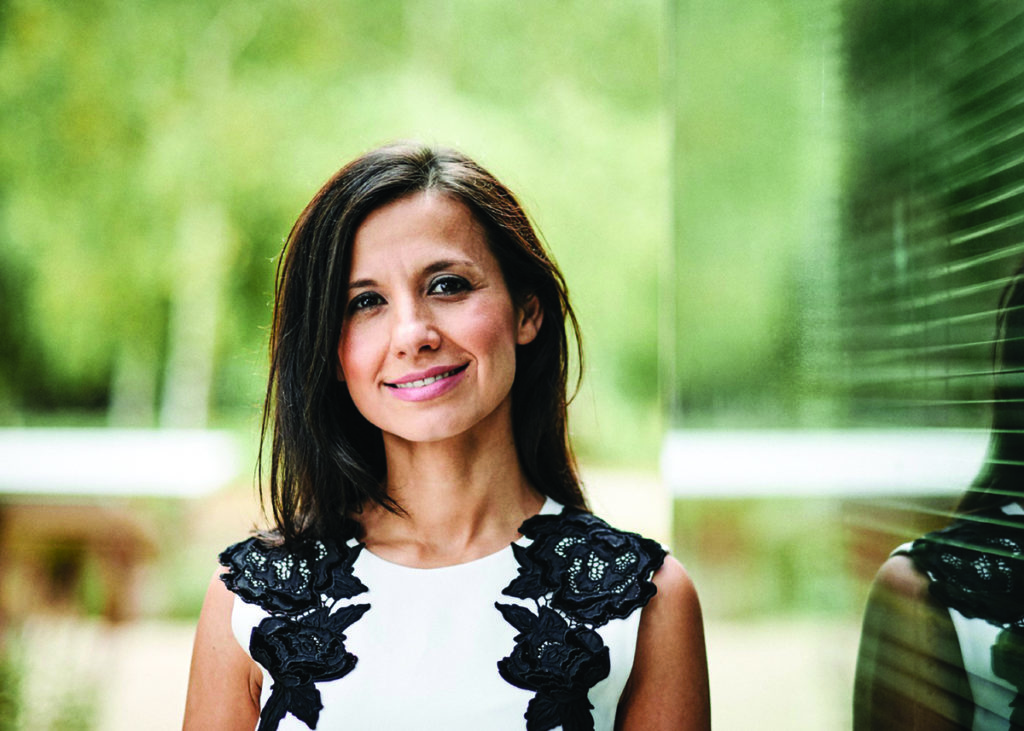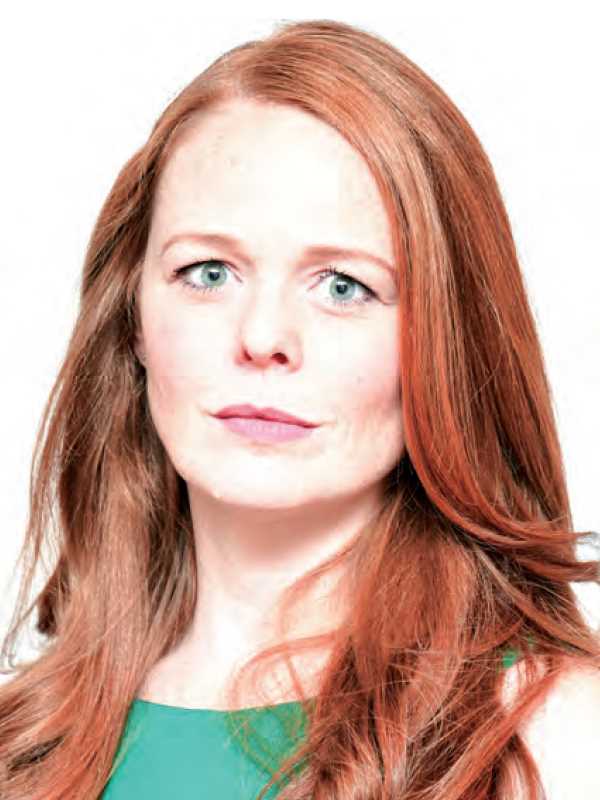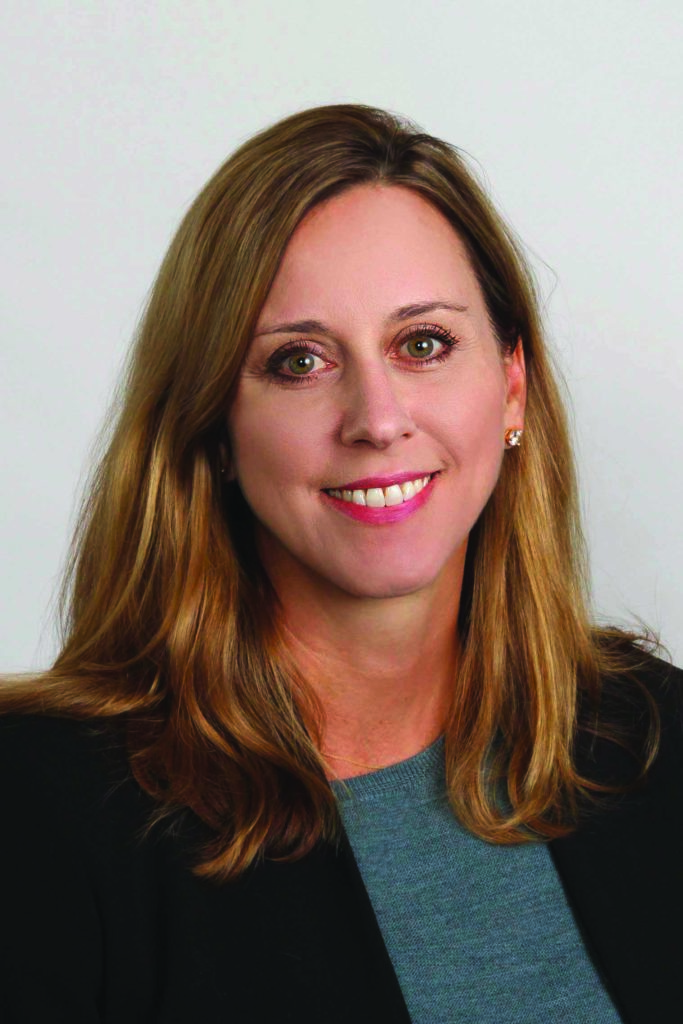Products You May Like
 CEOs of large and mid-market companies have invested lots of time and money in the past several years reaching outside of their own outfits for innovative ideas and people, then bringing them under the tent in various ways: corporate venture arms, accelerators, incubators, stakes in startups, new partnerships and outright acquisitions.
CEOs of large and mid-market companies have invested lots of time and money in the past several years reaching outside of their own outfits for innovative ideas and people, then bringing them under the tent in various ways: corporate venture arms, accelerators, incubators, stakes in startups, new partnerships and outright acquisitions.
But in doing so, company chiefs may be neglecting to unlock the considerable innovation engines that already exist right under their noses. And now—abruptly facing stubborn and even acute problems, ranging from inflation to supply-chain instability to geopolitical woes and the threat of recession—may be a good time for leaders to try harder to tap the formidable power of “intrapreneurship.”
“The pendulum is swinging,” says Andy Binns, director at Change Logic and author of a new book on intrapreneurship. “The lab model is great for play but not for execution, and many firms are unhappy with the outcomes being delivered by outside entities. Some are pulling out altogether or at least substantially changing how they function.”
Linda Yates, founder of growth incubator Mach49, says more companies “are realizing they already have core assets and competencies and capabilities—like ideas, talent, brands, channels and customers,” providing strong foundations for greater intrapreneurship.
Intrapreneurship is far from a new idea in Corporate America, of course. Serendipitously, for example, it led to 3M’s development of the miracle adhesive on Post-it Notes. Companies got more serious about it toward the end of the 20th century. Even some of the most significant innovations of the digital era have come from intrapreneurs, including Microsoft’s Office 365, Google’s Gmail, Amazon’s Prime and Fuji’s escape into broader chemical and biochemical markets instead of failing with the demise of photographic film as Eastman Kodak did.
Many companies have been happy with ideas, products and talents generated by partnering with and investing in startups. “But where you run into difficulties is scaling it into a business,” Binns says. “There are no good examples of a business that creates new ventures through external, arm’s-length labs, but there are loads of examples of creating new businesses from internal innovation.”
So intrapreneurship is getting more attention these days. For instance, last year, after years of reaching outside to acquire fast-growing innovators such as Annie’s Homegrown and setting up its 301 Inc. corporate-venture arm, General Mills established an intrapreneurship program called Gworks. It selects internal researchers and others to become “cofounders” of promising product and brand initiatives, including developing and testing a new low-blood-sugar brand of snacks, Good Measure.
“We know we need world-class innovators and entrepreneurs in spaces where we don’t have brands, so we’re nurturing and growing our own talent in Gworks,” says Jonathan Scearcy, who recently left his job as cofounder of the Innovation Lab at General Mills.
A focus on intrapreneurship can be attractive to innovative minds on staff because “we can provide the developers and engineers rather than have a situation where someone is forced to do that on their own,” says Chris Francosky, CIO of Kore, an IoT technology provider. “Plus, we have global reach with unique partnerships that someone couldn’t start on their own from scratch.”
Such intrapreneurial initiatives are “becoming a ‘yes-and,’” Yates says. “A corporate-venture arm and an internal venture factory are yin and yang, and they should work together. But the success rate for intrapreneurs has to be much higher, because no large company can afford the failure rate that even Silicon Valley has.”
Some CEOs trying to do more with intrapreneurship remain skeptical that it can yield as much innovation as outside-in efforts. “Part of entrepreneurship is risk,” says Gleb Polyakov, CEO of Nylas, a business-software provider. “Tech companies tell you you’re ‘CEO’ of your own project; no you’re not. Or they give people pet projects, but they have so many sign-offs that they can’t accomplish their goals.”
But Binns argues there’s a mentality among most intrapreneurs that motivates them to access their innovative minds for their employers. These “tend not to be people who are going to go set up a startup,” he says. “They’re typically an insider; they think how to get there quickly with the assets they’ve got.
“But also, they’re more oriented to the company they’re in and the colleagues they have rather than being very individualistic. That is part of how they get through the corporate morass.”
Or, as Wei Deng, CEO of Clipboard Health, puts it, “Do you want to be the CEO of your desk and a URL, or do you want to lead a growing team at a unicorn?”
Here are some of the best ideas from companies that are blazing trails in intrapreneurship:
RECRUIT STARTUP FOUNDERS
Wei Deng, CEO
Clipboard Health, San Francisco
Healthcare-scheduling software provider
 We hire a lot of former startup founders, and we see that many of them are scrappy enough to find ways to move the needle in our organization and specifically with our product.
We hire a lot of former startup founders, and we see that many of them are scrappy enough to find ways to move the needle in our organization and specifically with our product.
Founders are good at problem discovery, at questioning assumptions and then acting on insights. Our culture works to empower them. We want them to be on a loop, moving from curiosity to implementation, again and again. We say, “If you see a problem, solve it.” There are no toes to step on here. It’s not someone else’s problem. Founders tend to thrive in that environment because it’s very similar to running your own company.
The unfortunate truth is that the equity value of most startups goes to zero. Also, most founders do not pay themselves market rates or anything near it while they are trying to get the product-market fit. We end up paying founders better than a lot of them could pay themselves, and, given our growth path, we make them part of a company that has a really high likelihood of a good outcome.
COACH ’EM UP
Rob Ioanna, Chief Technical Officer
Syska Hennessy, New York City
Engineering firm

Our Syska Innovations subsidiary invests in seed-stage companies, pilots their software and products and promotes ideation and technology development within Syska. We’re trying to ignite things internally so that we are at least at pace with disruption that’s happening, not left in the cold and disrupted by others.
We mimic one of the most successful companies out there in intrapreneurship, Chick-fil-A, and take a very decentralized approach. That way we get more ideas across the entire company; it’s harder to manage, but you get all that passion.
This includes creating a network of coaches throughout the firm, so that maybe one of every 20 people has an “innovation coach.” We teach the coaches problem-solving, market analysis and other skills. It’s not their full-time job, but it’s additional responsibility that we incentivize with some extra base compensation, some bonus.
For individual ideas that come through the coaches, each employee gets to vote with Brightideas “coins”—like the “Like” function on Facebook—and every quarter, the idea that has the most coins get a $5,000 bonus. Plus it’s a nice thing to show others; we showcase that person’s idea on our blog, and they have speaking opportunities at different summits and innovation conferences.
PUSH THEM OUT OF THE NEST
Gleb Polyakov, CEO
Nylas, San Francisco
Business software provider
 We just set up the Nylas Alumni Fund, which provides $20,000 toward a seed round of funding for both current and former employees who have turned entrepreneurs. We’ve already informally done similar things in the past, and we have a wall in our office about where our alumni go next.
We just set up the Nylas Alumni Fund, which provides $20,000 toward a seed round of funding for both current and former employees who have turned entrepreneurs. We’ve already informally done similar things in the past, and we have a wall in our office about where our alumni go next.
For the fund, we know the quality of these folks’ skill set, and we get to take a stake in a company that’s founded by a strong person. We want Nylas to be helping them in their career for the long term. No one stays in a place for longer than five years anyway. My job is to make sure our people are rich and famous wherever they want to be, and Nylas is on their résumé.
And we think it helps recruiting. There is a qualitative excitement about it at the company. And while in the past it’s been informal, with a program, it helps demonstrate the values we have as an organization.
LAY DOWN A PARALLEL TRACK
Chris Francosky, CIO
Kore, Atlanta
IoT technology provider
 We created an innovation lab in 2020 to push intrapreneurship and help streamline innovation, which is constantly needed in the fast-growing and disruptive field of IoT. We created a new type of operating system for running it, which we call Growth OS, in contrast to our core business.
We created an innovation lab in 2020 to push intrapreneurship and help streamline innovation, which is constantly needed in the fast-growing and disruptive field of IoT. We created a new type of operating system for running it, which we call Growth OS, in contrast to our core business.
In Growth OS we have a quick, agile, fail-fast mentality. The trick was to harness the entrepreneurial mindset internally to give those individuals who have an ability to execute on new ideas some kind of outlet.
The risks are more our ability to learn and explore versus putting our mainline business at risk. It’s a challenge with an organization of our size, but we’re maintaining our link to the mainline business so we don’t build anything that’s not going to work with the mainline strategy.
We’ve gotten better at working in a guiding coalition with representation from the core business, so the surprise factor doesn’t exist anymore: People there are well aware of what’s going on and giving input, but we can still move fast.
LEVERAGE YOUR INDUSTRY
Roy Nouhra, CEO
Ocean Craft Marine, Annapolis, Maryland
Boat builder
 We recently launched the Accelerator for Innovation in the Maritime Ecosystem, which will enable ideation, collaboration, cross-pollination and integration among our industry peers to accelerate innovation across the board. Ocean Craft is investing more than a quarter billion dollars in this over the next 10 years.
We recently launched the Accelerator for Innovation in the Maritime Ecosystem, which will enable ideation, collaboration, cross-pollination and integration among our industry peers to accelerate innovation across the board. Ocean Craft is investing more than a quarter billion dollars in this over the next 10 years.
This will change the way the industry operates and speed the process significantly because we’re choosing collaboration over siloed work, transparency over secrecy and partnership over competition.
If you keep seeing competition only as competition, you’re going to stay where you are on innovation. Our competitors are partners, and each one has a specialty it can put on the table. It’s a way to unlock a lot of knowledge that’s trapped in our organization and others and to deliver better solutions for the end users, who in our industry are military and recreational customers.
PROVE THAT IT WORKS
Dean Guida, CEO
Infragistics, Cranbury, New Jersey
User-interface and user-experience software

When we launched the Infragistics Innovation Lab, it cemented our commitment to our internal inventors and entrepreneurs. Now, we have a $50 million fund and a formal process for the constant innovation that we need to stay two steps ahead of technology shifts.
The lab encourages employees to contribute a regular stream of insights that help the company shape ongoing innovation. It provides freedom for internal inventors to experiment with innovations beyond the company’s core product, without the need to generate immediate revenue. One product that came out of it is our business-intelligence tool, Reveal, that is commercially available today.
We try to reward everyone at fair-market value and reward people who are A-plus players and getting outstanding results, rather than creating a single value or event [around a successful idea]. That would create too much conflict.
MAKE A POINT OF RECOGNITION
Elona Mortimer-Zhika, CEO
Iris Software Group, London
Business software provider
 We created the Made in Iris CEO Awards to foster employee entrepreneurship, new ideas and innovation to enhance business. Each quarter, employees can present business plans for new or existing mission-critical software and services to further support our vision and make sure customers get it right every time.
We created the Made in Iris CEO Awards to foster employee entrepreneurship, new ideas and innovation to enhance business. Each quarter, employees can present business plans for new or existing mission-critical software and services to further support our vision and make sure customers get it right every time.
The diversity of ideas presented by employees continues to surprise us. Because of their proximity to our customers, we’ve received concepts that are spot-on and would’ve taken years to reach production if employees hadn’t suggested them.
While developing ideas for the awards, entrants often pursue tasks and projects outside of their daily business functions and develop additional presentation and collaboration skills. In most cases, employees who propose the ideas haven’t yet made it into management, so the ideas are really different from what we’d expect to see moving up the management chain. They’re less risk-averse and more innovative.
Our executive panel reviews entries and provides investment and resources to the strongest proposals to bring their ideas to fruition, and the projects that receive funding are automatically entered into the annual “Made in Iris” CEO awards for a chance to win a one-off prize of £25,000 for individual ideas or £50,000 for team ideas.
CREATE AN INTERNAL VENTURING STRUCTURE
Jillian Slyfield, Chief Innovation Officer
Aon, Chicago
Professional services firm
 We have an innovation team called Aon Growth Ventures. When we look at filling gaps, we look at re-sourcing internal capabilities differently, or it might be an acquisition of capabilities we don’t have.
We have an innovation team called Aon Growth Ventures. When we look at filling gaps, we look at re-sourcing internal capabilities differently, or it might be an acquisition of capabilities we don’t have.
Growth Ventures has a core team that looks like a C-Suite and growth accelerators that work in each area of our business, such as climate, IP, digital assets such as crypto, and new mobility.
The leader of each team is responsible across the entire firm for net new-product generation, to bring together current capabilities the firm has to clients in ways they haven’t seen before. That might be in insurance, data and analytics, software and so on. That leader is responsible for completing that value proposition at large.
USE AN ALL-OF-THE-ABOVE APPROACH
Leticia Gonçalves, President, Global Foods
ADM, Chicago
Food commodities trader and processor
 We have created three different physical innovation centers around particular capabilities, including the latest, our Protein Innovation Center in Decatur, Illinois. This center will allow us to take advantage of our legacy in the plant-based, alternative-protein space, where we were actually the first company to bring out a veggie burger, using our textured protein, 40 years ago.
We have created three different physical innovation centers around particular capabilities, including the latest, our Protein Innovation Center in Decatur, Illinois. This center will allow us to take advantage of our legacy in the plant-based, alternative-protein space, where we were actually the first company to bring out a veggie burger, using our textured protein, 40 years ago.
We use our innovation centers and our go-to-market approach to drive speed to market, from concept to market. We use our current knowledge to say, “What’s next?” We codevelop with our customers, and it’s that ability, as well as our use of value-chain capabilities that help us bring the best products to consumers.
But we believe in an ecosystem approach, innovating some things in house, partnering with new companies or startups that can complement our capabilities, and eventually making acquisitions. We truly believe in a buy, build and partner approach. Then you can have the best of all and create competitive advantage.
EMPHASIZE MENTORSHIP
Gustavo Sepulveda, Robotics and Innovation Business Head Panasonic Connect North America, Newark, New Jersey
B2B technology integrator
 Panasonic believes mentorship is very important. If we want to do new things in the future, it’s important that someone shares the experience from the past in order to repeat what went well and to avoid what went bad. This is critical.
Panasonic believes mentorship is very important. If we want to do new things in the future, it’s important that someone shares the experience from the past in order to repeat what went well and to avoid what went bad. This is critical.
One of our programs puts together a mentee and a mentor, and they work together for a year. The mentee sets the goals, what he or she wants to reach in the next 12 months, and they have on average one monthly meeting where the mentor helps the mentee to reach the goals.
It’s very important that the mentor doesn’t solve the problem for the mentee. It’s a development program.
CONDUCT AN INNOVATION SUMMIT
Tia Rains, Vice President, Customer Engagement and Strategic Development
Ajinomoto Health & Nutrition North America, Chicago
Maker of food ingredients
 We were used to giving our ideas to our parent company in Japan, but recently we completely overhauled our approach to innovation. We had to teach our people what innovation even is; it wasn’t part of our DNA [in the North American arm] before. We are trying to set up a growth pipeline for our future.
We were used to giving our ideas to our parent company in Japan, but recently we completely overhauled our approach to innovation. We had to teach our people what innovation even is; it wasn’t part of our DNA [in the North American arm] before. We are trying to set up a growth pipeline for our future.
We kicked off our effort with bimonthly meetings where we would bring in speakers to talk about trends and innovation in general. We had to teach people what innovation is, how we approach it, and get them thinking around what customers are looking for to grow.
Then, in May 2021, as we moved into our new headquarters, we hosted a day-and-a-half “innovation summit” where we invited 40 people from across the organization, from R&D and culinary and supply chain and sales, reps from accounting, junior as well as senior people and even interns. We picked people who were excited to be in the room and to have accountability for the innovation process.
The cross-functional approach was great: When you have an accountant sitting next to a chef, it’s fascinating to see how they build off each other and come up with something neither would have done independently.
We left that session with 118 different ideas on ways we could grow our business: products, new processes, new partners. It completely exceeded our expectations. Some weren’t viable ideas; some were farther out that we’re nurturing along. But we ended up with a handful of near-end ideas that we’re in the process of deciding this year if we’re going to proceed with, including new ingredient technologies that really push our boundaries.
